Current research in the Georgian papers: a symposium to take stock, Windsor, 4 September 2017
By Arthur Burns, Academic Director of the Georgian Papers Programme, King’s College London
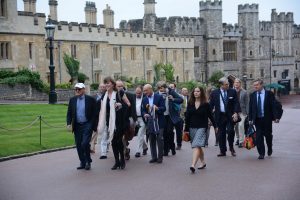
Photo: © Castulo Hernandez Robles
As we launch the second tranche of digitized documents for the Georgian Papers project, this is a good moment to reflect on the progress of academic research related to the project. On 4 September 2017 the Royal Archives at Windsor Castle hosted a one-day symposium for the Georgian Papers Programme, organised by the Omohundro Institute of Early American History and Culture. It provided an opportunity for those associated with the programme — whether as members of the core project team at King’s, the Royal Archives and the Omohundro, representatives of participating institutions such as the Library at George Washington’s Mount Vernon and the Library of Congress, or as fellows of the project — to hear extended reports from a significant proportion of the now more than thirty scholars whose research into the Georgian papers has been supported by fellowships from the Omohundro, King’s, Mount Vernon and the Sons of the American Revolution.
To all of those present it felt as if a significant and exciting milestone had been reached. The event not only demonstrated the extent and the range of the research already undertaken, but also made clear that this research has indeed begun to realize the Programme’s ambition of unlocking the potential of this unique archive to support new interpretations of important themes in eighteenth-century history across the globe. It also embodied a further ambition: to forge a community of scholars meeting on the common ground of a single archive to discuss the intersections and insights of their research in ways that highlight aspects of their projects which might not otherwise appear significant.
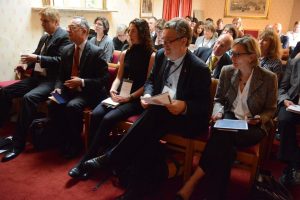
An attentive audience at the GPP Fellows Symposium at Windsor, 4 Sept 2017, including on the front row from l. to r. Andrew O’Shaughnessy, Bruce Ragsdale, Anya Zilberstein, Arthur Burns and Karin Wulf. Photo: © Castulo Hernandez Robles
There is not enough space here to describe each of the papers presented in what was a very successful symposium. However, we anticipate that many of the fellows will soon themselves discuss their findings either in their own blogs here or in other venues. But this is a good opportunity to reflect on what the symposium reveals about the research taking place in association with the project, and to note some emerging themes.

Daniel Reed speaking at the GPP Fellows Symposium at Windsor, 4 Sept 2017. Photo: © Castulo Hernandez Robles
The symposium made apparent what those already familiar with the archives suspected, but which, in the absence of full indexes and catalogues (which the project will produce), has hitherto been hidden from those who have not physically visited the Round Tower: the sheer range of research projects for which the archives contain significant materials. We explored the full chronological scope of the archive collection, which is still in the public mind largely associated with George III. Daniel Reed‘s (Oxford Brookes University) presentation of his research into royal chaplains concentrated on the period between 1714 and 1760, whereas Jane Levi‘s (King’s College London) discussion of the provisioning of royal banquets focused on the coronation festivities of George IV.

Jim Ambuske at the GPP Fellows Symposium at Windsor, 4 Sept 2017. Photo: © Castulo Hernandez Robles
As these two examples also suggest, the range of themes discussed was also exceptionally wide. Those parts of the archive which have previously been published focus in particular on the political and military history traceable in royal correspondence, or the life of the court and the royal family. These topics were duly represented in the presentations with Rachel Banke‘s (University of Notre Dame) reconsideration of Lord Bute and George III’s respective contributions to imperial reform in the 1760s, Jim Ambuske‘s (University of Virginia) reflections on George’s reaction to the loss of America, and Andrew O’Shaughnessy‘s (Monticello and University of Virginia) discussion of the evidence the archive provides on the conduct of the war in America. These presentations demonstrated that — even on subjects of long-standing academic interest where we might think we know the sources — revisiting the archive can still bring fresh insights, not least as our sense of what might be ‘relevant’ material expands, and the selective nature of earlier editions becomes more apparent.
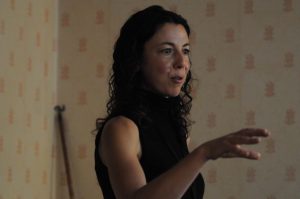
Anya Zilberstein speaking at the GPP Fellows Symposium at Windsor, 4 Sept 2017. Photo: © Castulo Hernandez Robles
It was striking, nevertheless, how many presentations used the archive to illuminate quite different topics and approaches to history: thus as well as food history, we heard from Bruce Ragsdale (Mount Vernon GPP fellow) on estate management as evidenced in George III’s agricultural activities, Felicity Myrone (British Library) on George as collector of topographical prints and drawings, Miranda Reading (King’s College London) on a key early nineteenth-century pressure group, the Society for the Suppression of Vice, Cynthia Kierner (George Mason University) on disaster relief in Georgian England, Flora Fraser (Mount Vernon GPP fellow) on the lives of Flora MacDonald and Horatio Nelson, and Anya Zilberstein (Concordia University) on animals in the Royal Archives.
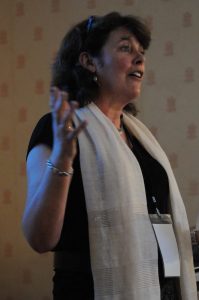
Suzanne Schwarz speaking at the GPP Fellows Symposium at Windsor, 4 Sept 2017. Photo: © Castulo Hernandez Robles
The range was equally impressive in geographical terms, underlining that the Georgian Papers are not just an archive for British and North American history, but for all regions touched by the global Georgian: thus Suzanne Schwarz (University of Worcester) took us to Sierra Leone for reflections on the African Institution and its royal patrons and Vincent Carretta (University of Maryland) explored his search for evidence of Africans present in Britain in the eighteenth century. It was also striking how many of the papers adopted at least a transatlantic and, in several cases, a more far-reaching geographical frame, even when their focus was firmly on Britain. This reminded all present that we can no longer think of Britain in isolation during this period, and indicates that the nature of the Georgian royal archives, reflecting the global responsibilities and interests of the monarchs, of itself enforces a recognition of this.
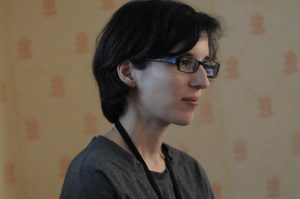
Felicity Myrone speaking at the GPP Fellows Symposium at Windsor, 4 Sept 2017.Photo: © Castulo Hernandez Robles
The colloquium also prompted some general reflections. First, several papers made clear how important an understanding of the nature of the archive — of its origins, arrangement (and re-arrangement), selective publication and weeding — will be in allowing new insights into key issues (a theme explored further in Karin Wulf’s blog being published alongside this one). Thus it was clear from Felicity Myrone’s work just how significant decisions about arrangement and cataloguing of archives in the nineteenth century may have been in cementing views about the significance of George III as an eighteenth-century collector which may now need to be revised. This underlines the importance of the approach to the digitization and interpretation of the archival papers that this Programme has adopted, in which archivists, conservationists and academics work alongside each other rather than in sequence, sharing insights the significance of which only becomes fully apparent when discussed with those with a quite different expertise.
Secondly, it was clear that in exploiting the archives as evidence of the development of approaches to kingship and policy-making they are best understood when read alongside other key royal collections of books, art and material culture, with the interconnections offering the possibility of unlocking key questions of chronology and causation.
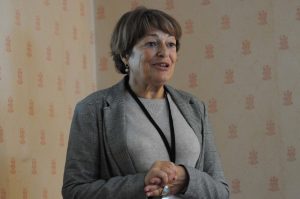
Flora Fraser speaking at the GPP Fellows Symposium at Windsor, 4 Sept 2017. Photo: © Castulo Hernandez Robles
Thirdly, it became apparent that silences in the archive are often of equal significance as direct evidence. Over the course of the day there was at least as much interesting discussion of what researchers had not found as of what they had discovered. Several papers highlighted the absence — at least in those parts of the archive where we might most readily anticipate encountering it — of evidence relating to activities which from other sources we know were of significance to the royal family, one notable case being philanthropy. How should we explain this? Is it that these things were in fact less significant than we have hitherto believed? Is it that the evidence was disposed of by others who regarded it as too sensitive, personal or insignificant to merit or allow preservation? If so what does that say about our own understanding of these themes? Or is it that the evidence indeed survives, but in a different and unexpected part of the archive, to emerge as the cataloguing and digitization process continues? If the last, this may have important implications for our understanding of how contemporaries understood these themes themselves.
Two final reflections: the first regards the importance of serendipity in the archive. All archival scholars experience this, of course, but the fact that the Georgian papers still await definitive cataloguing and have been exploited for only a limited range of projects in the past increases its significance for researchers. Several of the papers reflected serendipitous discoveries and the resultant change of direction and approach to a theme prompted by encounters with unexpected documents in the archive. It will be part of the challenge of the digitization project to preserve this opportunity for chance encounters for remote users.
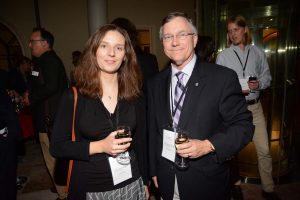
Rachel Banke and Andrew Morse at the GPP Fellows Symposium, Windsor , 4 Sept 2017. Photo © Castulo Hernandez Robles
Finally, I want to return to the importance of building a research community around the papers, one united not by a shared approach or a geographical proximity, but by having worked in a particular archive. The symposium demonstrated the opportunities this presents for interdisciplinary exchange, revelations of significance not apparent from a focused project perspective and for fresh inspiration to pursue new insights that such a community affords. We hope to perpetuate that opportunity as our community of fellows grows, but will also seek to expand the community around the project over the next few months in a new initiative – The King’s Friends – which we are launching alongside the second release of papers. In the meantime, it remains only to thank Karin Wulf and her team at the Omohundro for organizing such a rewarding event.
Arthur Burns
All photographs from the symposium are © Castulo Hernandez Robles, photographer
